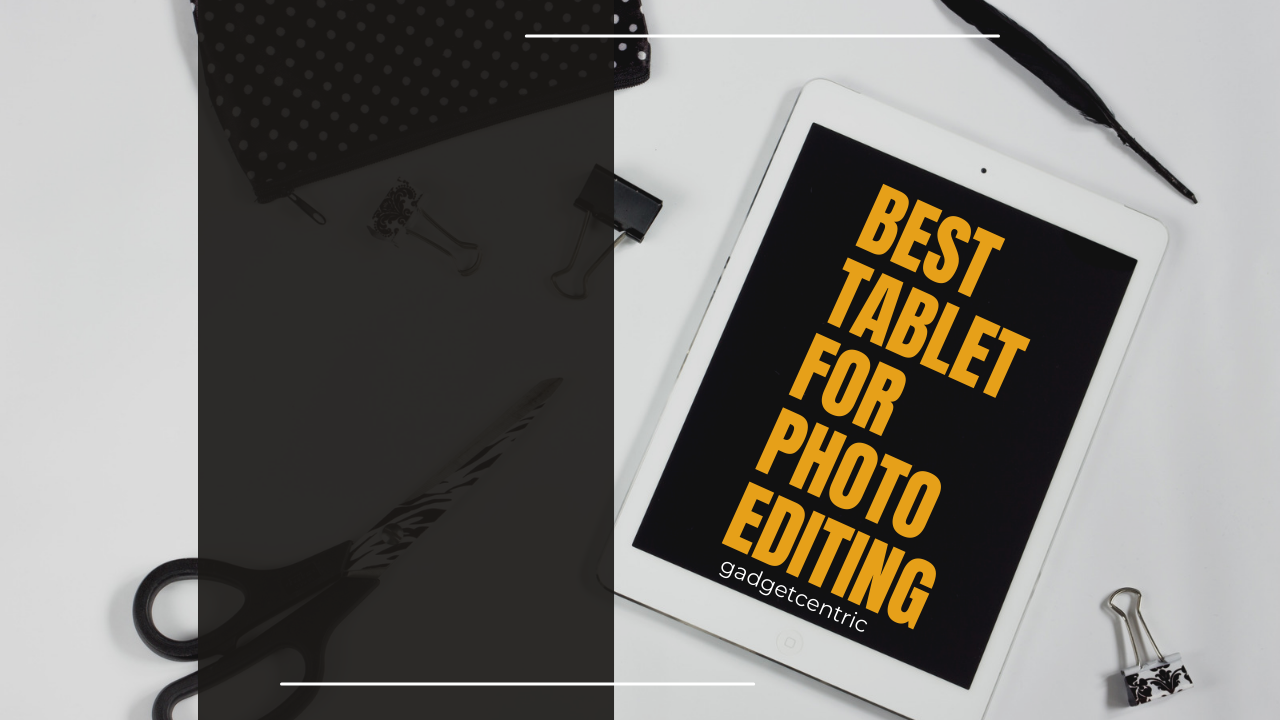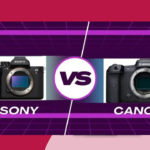
Best Tablet For Photo Editing
Introduction
A proper tablet will significantly make photo editing much easier. The ideal way would be to get the best tablets for photo editing, which offer loads of power from their high-resolution displays, all while maintaining tonnes of portability by using touchscreens and styluses. This kind of thing could be invaluable to pro photographers, or even just scrubby snapshooters who like fiddling with their photos—and it’s something you’ll want sitting on your desk graciously helping out during all those tedious editing chores. The very best tablets also run the industry-leading editing programs, like Adobe Photoshop, Lightroom, and Procreate, so you can work at full quality on the go. You get additional storage, faster processors, and improved colour accuracy to give you more vivid details in your photos. Best tablets for photo editing. Also read Best tablets for note taking
Why People Like to Have the Best Tablet for Photo Editing
We live in the age of digital representation, and so photo editing is considered a don’t-miss step, regardless if you are a pro photographer or a passionate fan. The right photo editing tool is necessary for an efficient and high-quality final product, and many have been flocking to tablets as the go-to device for their photographic finishing. That is why it is so highly desired by many a user to own the very best tablet for photo editing, and therefore all the more one of our finest accomplishments.
Portability and Convenience
One of the main reasons photo editors use tablets is portability. Tablets are light in weight and can be carried easily everywhere, unlike a desktop computer or heavy laptops. This feature will be perfect to work on projects when you are travelling, commuting, or simply chilling at a café. Editing photos on the fly is simpler than ever, and owning a tablet means you can always be prepared to tweak your snaps whenever the mood may strike.
Touchscreen Interface That Is Self-Intuitive
Tablets make the editing process more tactile with their touch-screen input mode. Advanced styluses: Many tablets come with advanced stylus support like the Apple Pencil or S Pen by Samsung that grant control to a finer level. It’s especially useful for things like retouching, masking, or creating detailed illustrations that traditionally require the precision of a mouse and keyboard. The direct manipulation of the screen is more intuitive and can lead to faster, more accurate corrections for a lot of users.
High-Resolution Displays
To properly edit a photograph, you need a device that can show them in proper detail. The top tablets for photo editing boast high-resolution displays with great colour accuracy, so that you can allow your creative juices to flow more freely in being able to pick out those blemishes, enhance colours, and work on finer details. When you need photos to look perfect no matter what medium they’re viewed on, it’s important to have the best display possible; that’s where tablets like the iPad Pro and the Microsoft Surface Pro come in.
Software Compatibility
The best tablets for photo editing support some of the most popular postprocessing apps, like Adobe Photoshop, Lightroom, or Affinity Photo. So that its users can use them anywhere, even on a portable device with professional-quality tools available for use. Several apps were optimised to use tablets—sso the experience is as good as a desktop edit.
Powerful Performance
Nowadays, tablets come with capable processors, lots of storage, and long battery life, as well as enough to be able to tackle difficult editing chores like! Working through filters, layers, and RAW files is all possible on the right tablet, with the best tablets offering the performance we need to do these effortlessly.
These reasons alone have made the best tablets for photo editing a must-have device if you’re after flexibility, power, and precision but want it in one pocketable package.
Top 5 Best Tablets for Photo Editing You Must Buy?
1. Apple iPad Pro
Our favorite among iOS devices is the iPad Pro (M2, 2022), which provides a feature set perfect for everyone from professionals to enthusiasts. With up to 11 or 12.9-inch Liquid Retina XDR Display with Nanotexture, it provides impressively accurate and bright colors needed for editing. Supported by the M2 chip, you get buttery smooth performance that sweeps through multitasking and heavy apps. Using the second-generation Apple Pencil, you can make finely detailed edits and annotations with imperceptible latency. Among the top apps, the iPad Pro plays nice with Adobe Lightroom and Photoshop, essentially turning it into a full-featured option for minor edits and complex masking alike. These combine strong hardware with top-notch software to create the kind of photography experience we are always after.

Customer Feedback:
| Customer reviews& ratings | 4.6 out of 5 stars 348 global ratings |
Specifications:
| Brand | Apple |
| Model Name | iPad Pro |
| Memory Storage Capacity | 512 GB |
| Screen Size | 13 Inches |
| Display Resolution Maximum | 2752-by-2064-pixel resolution at 264 ppi |
Why It’s Great for Photo Editing:
Offering an optimal balance of color accuracy and brightness, the Liquid Retina XDR display on the iPad Pro is one of the best displays for editing images on a tablet. With its M2 chip, this Mac can handle multiple tasks without missing a beat and easily run demanding applications. Apple Pencil support allows for exact touch-ups and edits to your funnel, making it easier to go about your business. Professional-level software for a wide variety of photographic tasks is available on iPadOS, making it an indispensable device for photographers.
2. Samsung Galaxy Tab S9 Ultra
Samsung Galaxy Tab S9 Ultra This is one of the most excellent photo editing tablets around and serves as an example of what it can do with a massive 14.6-inch Super AMOLED screen, which means colors are vibrant, but so too are the deep contrasts that make detailed image work pop. With the Snapdragon 8 Gen 2 processor, it delivers almost instantaneous performance for fast editing of high-resolution images. The tablet also has an improved S Pen, tailored for fine editing for those delicate touch-ups. It can also use Adobe Photoshop and Canva for editing a picture in different styles. This tablet is the perfect choice for photographers who want to edit while out of their studio, with excellent hardware, an awesome display, and a bunch of different software options.

Customer Feedback:
| Customer Ratings | 4.44.4 out of 5 stars 36 Global Ratings |
Specifications:
| Brand | Samsung |
| Memory Storage Capacity | 12 GB |
| Screen Size | 14.6 Inches |
| Generation | 8th Generation |
| Special Feature | S Pen |
Why It’s Great for Photo Editing:
Samsung Galaxy Tab S9 Ultra The Samsung Galaxy Tab S9 Ultra comes with a large, vibrant Super AMOLED display, which offers superb color depth and contrast, making it ideal for editing photos. No large files or lackluster speeds here. The latest Snapdragon 8 Gen 2 processor means it performs well even when working with the biggest stuff. S Pen included, giving highly detailed edits and annotations to suit the perfection of any refinement. A versatile machine with access to an abundance of editing software, then, is going to be one of the top choices for photographers.
3. Google Pixel Tablet
Google features a Pixel C-Inch Large and 2560 x 1600 pixel LCD panel that gives you great detail and color reproduction suitable for photo editing. It runs on Google’s premium Tensor G2 processor, which is used in all of Google’s top-end phones, and ensures it can more than manage anything you throw at it with photo editing, multitasking, or running intensive apps. Capacity goes up to 256GB, which is good for those photo libraries and editing apps, but the lack of microSD expansion is galling. The tablet doesn’t have a stylus of its own, but it can work with third-party options—ssuch as the Adonit Pro 4—tto provide that kind of accuracy for editing purposes. The pixel tablet runs on Android; hence, it supports popular photo editing apps like Adobe Lightroom and Snapseed, making it versatile for mobile photographers.
Apple iPad Pro

Customer Feedback:
| Customer Ratings | 4.54.5 out of 5 stars842 |
Specifications:
| Brand | |
| Model Name | Pixel Tablet and Pixel Tablet Speaker Dock |
| Memory Storage Capacity | 128 GB |
| Screen Size | 11 Inches |
| Display Resolution Maximum | 2560×1600 Pixels |
Why It’s Great for photo editing?
Google Pixel Tablet: A newer entrant into the tablet game, those who pay more of a price for their device… spend less on apps to develop media products. This device also syncs wonderfully with everything that Google offers, and its screen is vibrant and vivid. While it might not have the iPad Pro and Surface Pro levels of power, this is a much more flexible and cost-effective option for editing on the move.
4.Wacom Cintiq Pro 16
The Wacom Cintiq Pro 16 features a 15.6-inch 4K UHD display with a resolution of 3840 x 2160 for incredibly detailed, vivid visuals—crucial for those critical photo edits. The most outstanding spec of the Samsung Slate is its Wacom Pro Pen 2; with 8192 levels of pressure sensitivity, it is absolutely in line with a fine-tuned retouch and has all possibilities for very detailed work. Equally important, the device is compatible with Mac and Windows computers, allowing for ultra smoother professional desktop software integration like Photoshop, Lightroom, and Capture One support. Furthermore, the ExpressKeys are programmable buttons to help improve your work efficiency by allowing faster access to commonly used functions.

Customer Feedback:
| Customer Ratings | 4.54.5 out of 5 stars745 |
Specifications:
| Brand | Wacom |
| Connectivity Technology | USB, HDMI |
| Pressure Sensitivity | 8192 Levels |
| Operating System | Mac OS X 10.14 Mojave, Windows 8.1, Windows 7 |
| Special Feature | Multi-Touch Screen |
Why It’s Great:
The most similar device to this is the Wacom Cintiq Pro 16, which is a hybrid tablet/pen display device. It isn’t a tablet that you can use on its own like the iPad or Surface Pro., but it works alongside your computer by connecting to provide, giving users both the power of their desktop or laptop and Wacom’s industry-leading pen technology. Photograph by Matthew Traylor The Cintiq Pro 16 is an amazing tool for any professional photographer who wants pixel-perfect control over their photo editing.
5. Microsoft Surface Pro 9:
A 13-inch PixelSense Flow display with a resolution of 2880 x 1920 on the Microsoft Surface Pro 9 produces vibrant colors and sharp detail—pperfect for working with photos or design. It provides strong performance choices, presenting both an Intel Core i7 or ARM-primarily based Qualcomm SQ3 processor, which is more than able to tackle picture editing duties. Up to 1TB of SSD storage for large files and projects. The Surface Pen brings a selection of enhancements to the editing experience, from precise input with natural tilt and pressure sensitivity for sketching, scribbling, and note-taking. With Windows on board, this also opens up the opportunity to run full programs such as Photoshop, Lightroom, and Capture One, making it a versatile and useful option for creative professionals.

Customer Feedback:
| Customer Reviews | 4.4 out of 5 stars 71 ratings |
Specifications:
| Brand | Microsoft |
| Model Name | E90MSQIM00017 |
| Memory Storage Capacity | 256 GB |
| Screen Size | 13 Inches |
| Display Resolution Maximum | 2880 x 1920 Pixels |
Why It’s Great:
When it comes to professionals wanting the tablet experience with full Windows, Microsoft’s Surface Pro 9 is the best you can get. Since the Surface Pro 9 can run desktop software, an app-based workaround simply is not needed, allowing the XPS photographers to screw your photographs into either Adobe Photoshop or Lightroom at most without any limitation. Laden with a PixelSense display, it gives the best color accuracy and can go up to an Intel i7 processor, which can run every task flawlessly.
Things to Avoid Before Buying the Best Tablet for Photo Editing
Unlike other tablets for photo editing features, there are a few mistakes you should avoid on your next purchase if you want to get the exact product that meets your requirements. These are some of the important things to keep an eye on before you go buy one.
1. Low-Resolution Displays
What to Look For: Low-resolution or poor color display tablets should be avoided. When you want solid, accurate color and easy-on-the-eyes detail for photo editing, a top-flight device’s screen is key. You will want Full HD (1920 x 1080) resolution as a minimum, but 4K is better. Tablets that don’t have this feature might ruin the edits’ quality.
2. Limited Storage
Editing photos, especially with RAW files, is very space-consuming. Do not go for tablets with no expandable storage and/or having little to pay on the inside. If you do a lot of heavy editing (which requires more space), then at least 128GB is the minimum we recommend, and cloud storage or an external drive is recommended for backups. Therefore, choose tablets with decent in-built storage and capacity to expand their device via microSD or cloud services.
3. Weak Processing Power
Without using weak processors and low RAM tablets. One downside of photo editing software is that it might be heavy and tablets too weak to work properly; they freeze while adding multiple layers on top of a regular picture or rendering a high-resolution image. Make sure the tablet has a high-performance chipset (e.g., an Apple M1/M2 or a Qualcomm Snapdragon 8-series) and at least 8GB of available RAM for better fluidity.
4. Lack of Stylus Support
For writers / artists: stay away from tablets without stylus support or with inferior styluses in case you want to do more detailed editing, or drawing. A stylus with responsiveness to detail is critical, as opposed to not having it for precise retouching or drawing fine line details. The iPad Pro, using the Apple Pencil; or any Samsung Galaxy Tab, employing its S Pen, certainly provide an irreproachable stylus experience.
Even better, you can be assured your next tablet for photo editing will perform to a top notch level, as long as you steer clear of these common pitfalls
FAQs
1. Top Tablets for Photo Editing
Apple’s iPad Pro, the Microsoft Surface Pros, and Samsung’s Galaxy Tab S8 are generally considered to be some of the best tablets for photo editing due to their sharp displays, powerful processors, and stylus compatibility.
2. Worth it for a tablet without a stylus for photo editing, or not?
You could of course edit without a stylus, but things like the Apple Pencil or Samsung S Pen make simple retouching and masking even fine-tuned adjustments much easier and more accurate.
3. Now, you need to know how a computer display can be compatible with most photo editing software.
A high-resolution display (full HD/4K), a wide color gamut, like P3 or accurate colors, and a contrast-rich environment need clear, detailed, and vibrant photo editing.
4. Can we edit photos as we do on a desktop or on a tablet?
Sure, these are nowhere near professional-grade editing software, but they still work on a lot of the higher-end tablets. The iPad Pro is able to run actual, real Adobe Photoshop, and the Microsoft Surface Pro can run full-fledged desktop applications, including Lightroom (also by Adobe) or a complete edition of Photoshop.
5. How much storage is there for a photo editing tablet?
We suggest using at least 128 GB for high-resolution or RAW image editing so you do not suffer from stuttering and freezes. As a welcome addition besides the tablet serving cloud connectivity, also available concerning expandable storage would be a supported microSD card.
6. It is not the higher speed that a photo editing photo inevitably needs to be processed directly
Yes, a fast processor allows you to work efficiently with large files and lots of layers and apply filters. M1/M2 or Snapdragon 8-series chipset-based tablets
7. External Photo Monitor (!) vs. Tablet
For instance, many tablets can output to external displays by using a suitable adapter or wireless connectivity; the iPad Pro and Surface Pro have this feature, making it easier for editing via a larger work area.
8. Raw Image Editing on Tablets
For sure, RAW editing is duported by most professional-grade tablets with the use of apps like Adobe Lightroom, Affinity Photo, and Capture One—and that helps in keeping the quality of the edits at a maximum.
Conclusion
So, to sum up, the perfect photo editing tablet can supercharge your creative productivity. Blending portability, power, and ease-of-use, tablets are a great alternative to traditional desktop setups. Tablets with features such as high resolution displays, support for use of a stylus (stylus from Wacom, etc.), and compatibility with professional software editing tools are quite popular among photographers (Photoshop, Lightroom, etc.) and designers. What to consider Things you need to pay attention to fundamentally It is simply displayed. There are also storage, processing power, and software compatibilities for tablets. Do not go with those things that many people do mistake, like going for low-resolution displays or underpowered devices, as this will slow down your editing experience. Invest in an excellent tablet for quick, precise modifications to photos, whether you are at home, in the in the studio, or en route.







